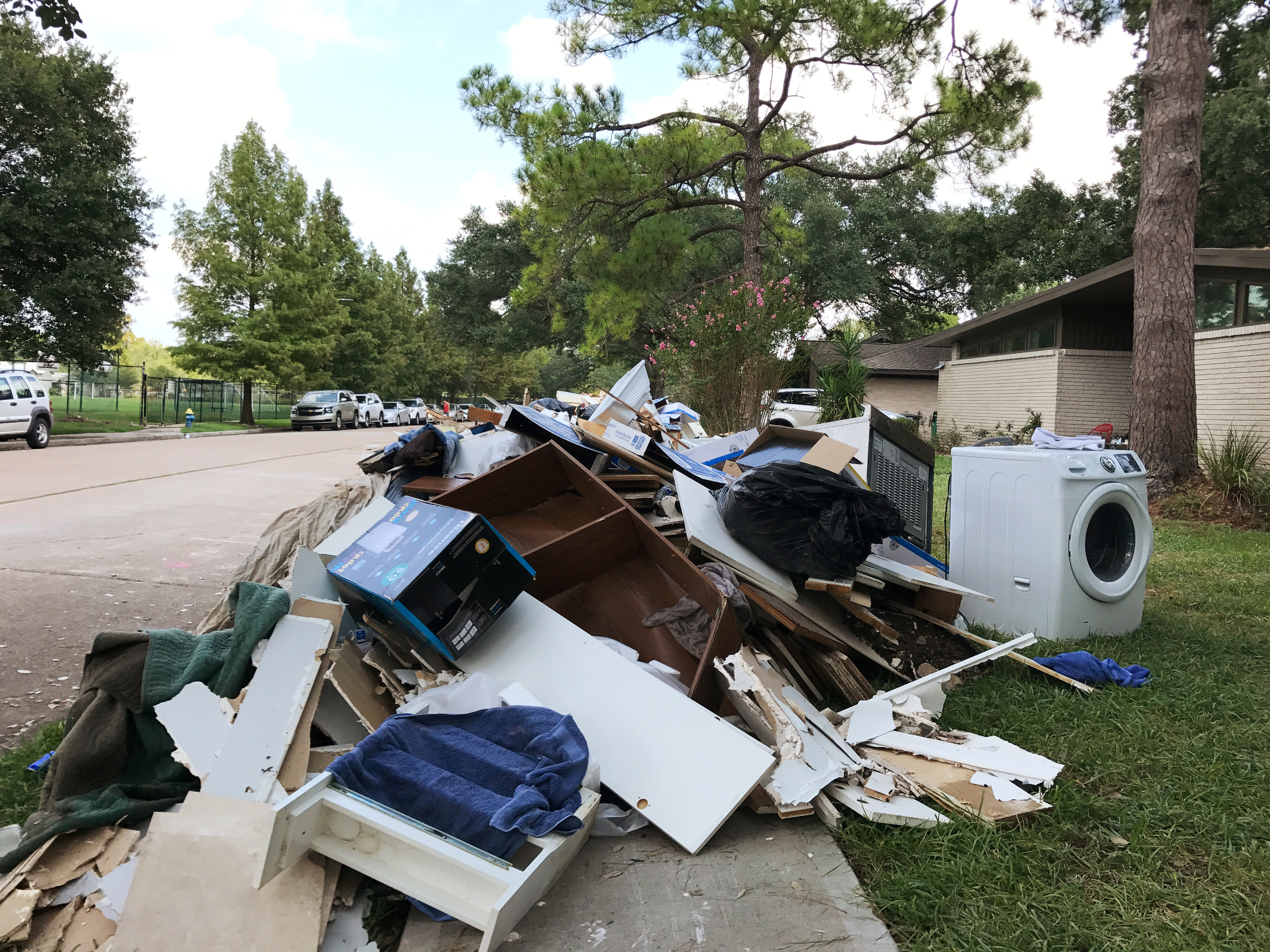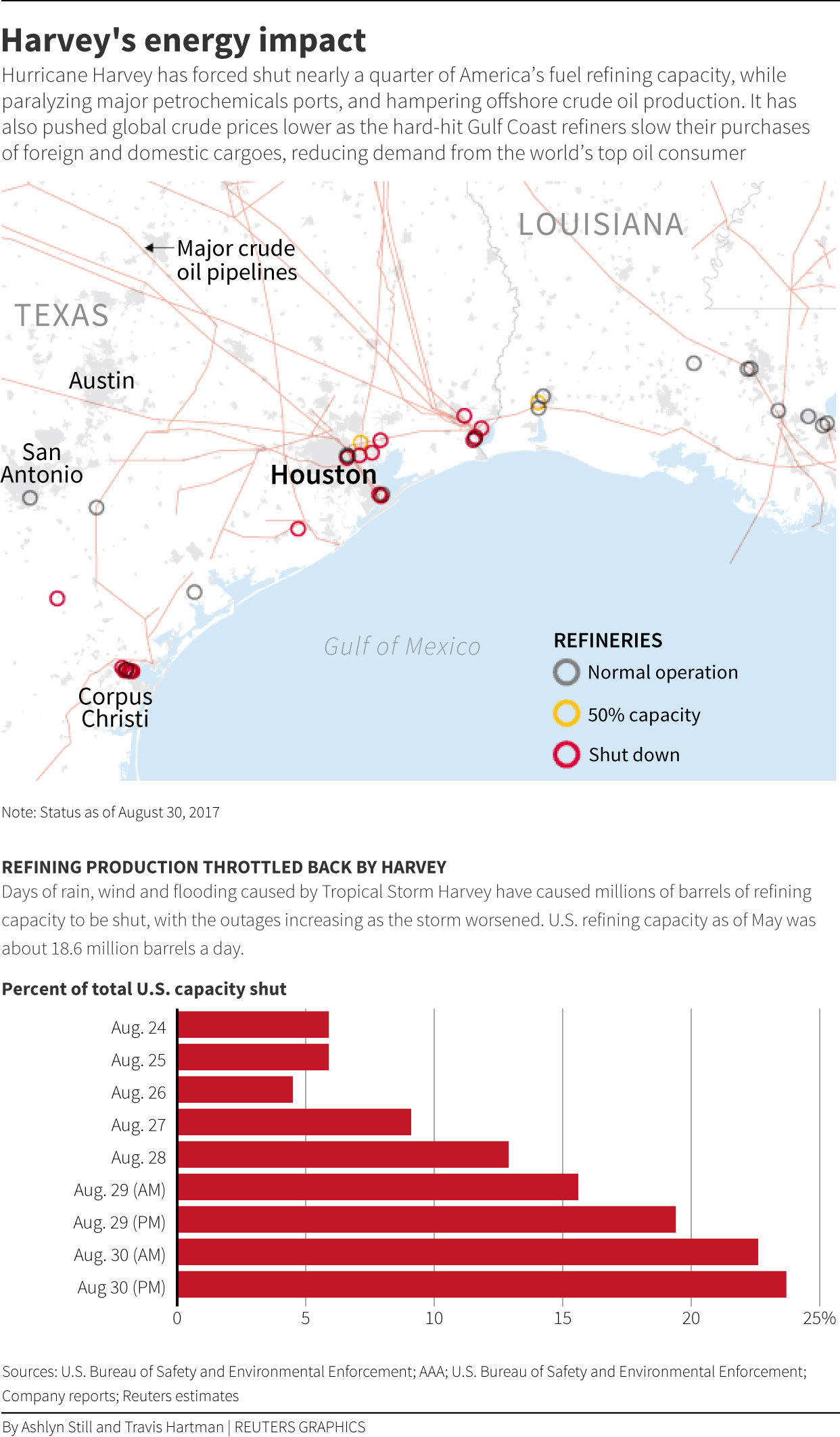
By Gary McWilliams and Daniel Trotta
HOUSTON (Reuters) – Houston area residents picked up the pace of their recovery from Hurricane Harvey on Tuesday, jamming roads as they returned to offices and schools to help get the nation’s fourth largest city and its vital shipping and oil industries back on track.
The region is getting a boost from Mexico, which sent volunteers to shelters and is preparing to send relief supplies in the next few day. Mexican Red Cross workers were staffing shelters in three Texas cities. “We are more than glad to be helpful,” said Gustavo Santillan.
Large employers, universities and transit services reopened or began full schedules on Tuesday, with floodwaters receded and the Labor Day weekend behind them. But not all of the Houston-area’s 6.6 million residents were in position to go back to work and were dealing with home repairs and waterlogged possessions.
“It feels surreal to be back at work,” said Hannah Smith, 31, who spent part of her day putting office furniture moved ahead of the storm back in place “It is one step in the direction of whatever the new normal is.”
Harvey tore through Corpus Christi in southern Texas on Aug. 25 before churning up the coast and hitting the Houston area especially hard. The storm killed as many as 60 people, dumped more than 50 inches (127 cm) of rain and caused damages estimated as high as $180 billion, including to 203,000 homes.
Oil refineries, pipelines and shipping channels in the nation’s energy center have begun a gradual return to operations. Exxon Mobil on Tuesday said its fuel terminals in the Houston area were supplying gasoline and it continues to work on reopening a shuttered Baytown oil refinery. Motiva Enterprises [MOTIV.UL], operator of the nation’s largest refinery, said it is in the process of restarting operations at its Port Arthur, Texas, plant.
Some industry stalwarts were still out of commission though. ConocoPhillips closed its Houston headquarters through Sept. 11. BP’s Houston campus suffered severe flooding and remained closed. Portions may be out of use until December, Chief Executive Bob Dudley told Reuters. About 650 of BP’s more than 5,000 Houston area full-time staff reported damage to their homes.
“I’ve got to get work done but I don’t think it’ll be a productive day,” said Daniel Semetko, 60, a Houston energy company worker, citing the number of people who were out of their homes due to storm damage.
With extensive property damage across the region, local and federal prosecutors formed a task force to investigate reports of home repair fraud and people posing as police to facilitate theft and other crimes, officials said. About 80 investigations into complaints were underway, said David Green, a Department of Homeland Security special agent.
Houston’s school district, the nation’s seventh largest, remains closed this week to repair flooded schools. The district has said about 75 of its 275 schools suffered major or extensive flood damage, but other school districts in the area and major universities were open for class.
IRMA AT CATEGORY 5
As Houston picked up the pieces from the devastation of Harvey, a new and even more powerful hurricane was headed for the Caribbean islands, the U.S. East Coast and Florida.
The U.S. National Hurricane Center said Irma, which it upgraded to a “potentially catastrophic” Category 5 storm, was about 130 miles (210 km) east of Antigua on Tuesday afternoon. Hurricane warnings were issued for Puerto Rico, Antigua, Montserrat, St. Eustatius, the British Virgin Islands and the U.S. Virgin Islands.
Port operations along the Texas coast that service the area’s oil and gas companies returned to work. At the last three of 28 Texas coast ports still closed to ship traffic, the U.S. Coast Guard said it was monitoring water currents for when shipping might resume.
U.S. gasoline prices fell on Tuesday as traders priced in a continued restart of flooded Gulf Coast refineries. Benchmark U.S. gasoline futures were lower by about 4 percent, returning to levels last seen before Harvey made landfall.
(Reporting by Ernest Scheyder, Catherine Ngai and Ron Bousso; Editing by Bill Trott and Tom Brown)











